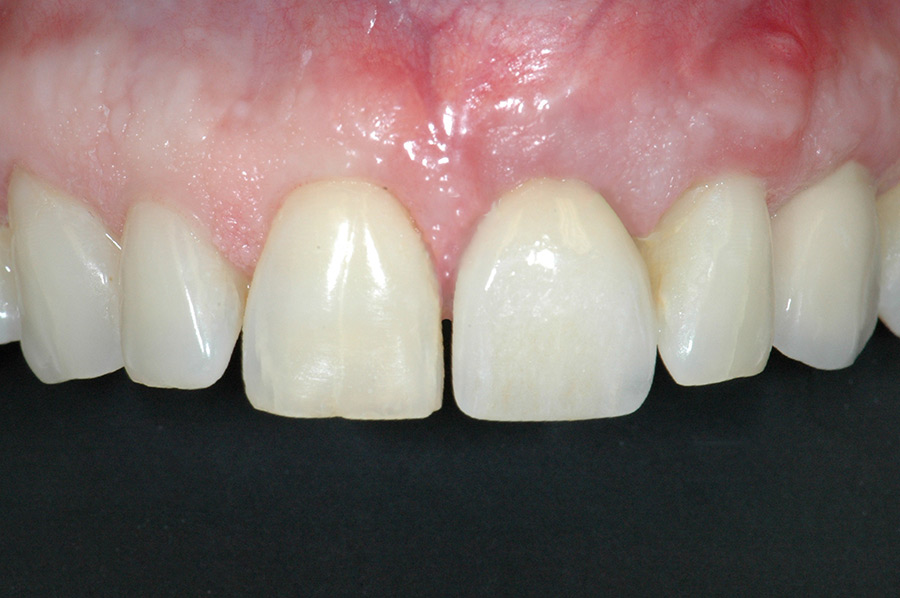
Treatment: Immediate Implant With Bone Ring Technique
Dental implants require adequate bone and soft tissue volume for long-term health and stability. It is not uncommon to find large bone deficiencies in sites following tooth loss due to a variety of reasons, including failed root canals, tooth fractures, and periodontal disease.
Often extensive, surgically advanced and technically demanding bone augmentation procedures with long healing periods are required to create the bony foundation for the planned dental implant. The main advantage of this method is that simultaneous implant placement and grafting in sites with extensive bone deficiencies is made possible. Each case should be thoroughly evaluated and planned by an experienced surgeon for a successful outcome. Conceptually the allograft technique is similar to those previously reported with the autogenous bone cylinder but has the major advantage of reduced morbidity to the patient since a second surgical procedure is not necessary.
"The main advantage of this method is that simultaneous implant placement and grafting in sites with extensive bone deficiencies is made possible."
DR. KAMRAN HAGHIGHAT, B.D.S., M.S., P.C.
Janis was referred to the Portland Implant Center for evaluation of a front tooth that had become mobile and tender. She had experienced episodes of suppuration and gum swelling that had been treated with antibiotics. A thorough clinical and radiographic assessment, including CT scan imaging, revealed extensive bone loss around the circumference of the tooth including the facial loss of the alveolar bone.
It is common for such large alveolar defects to be treated with a staged treatment protocol where bone grafting is performed first, followed by implant placement after a 4-6 month healing phase. The treatment time is therefore prolonged. With the allograft Bone Ring technique, treatment times are typically reduced by as much as 4-6 months as the bone graft and immediate implant placement is performed simultaneously.
Patients like Janis welcome the shorter treatment timeline and minimally invasive techniques for treatment. Our experience with the allograft Bone Ring and immediate implant placement following tooth extraction makes this a feasible option for suitably selected cases.
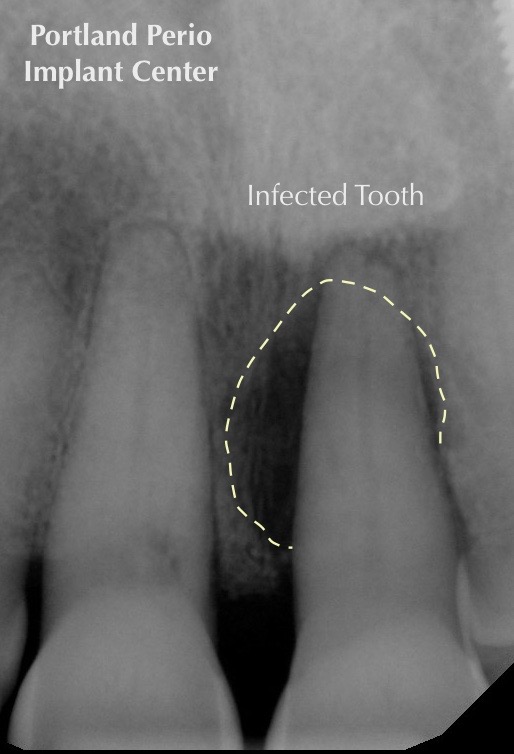
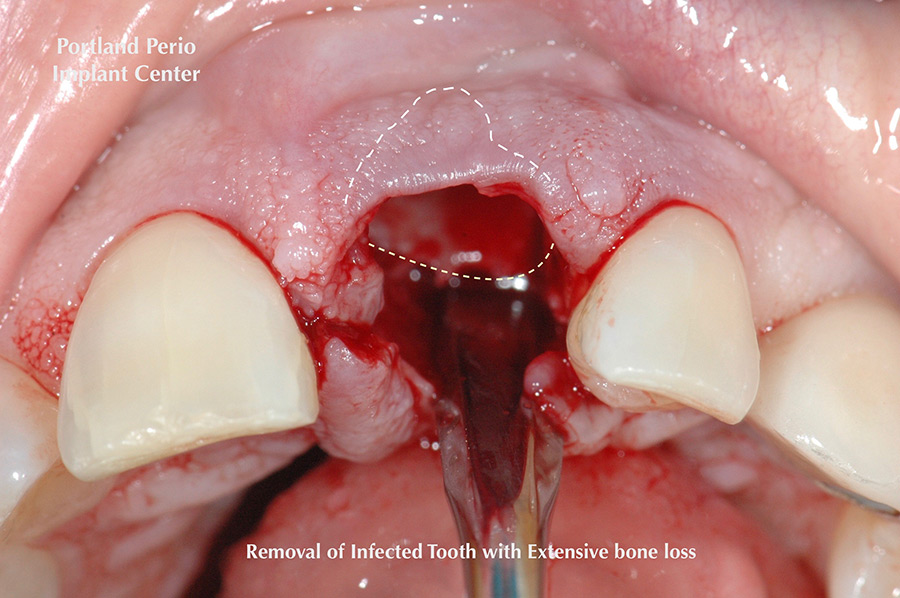
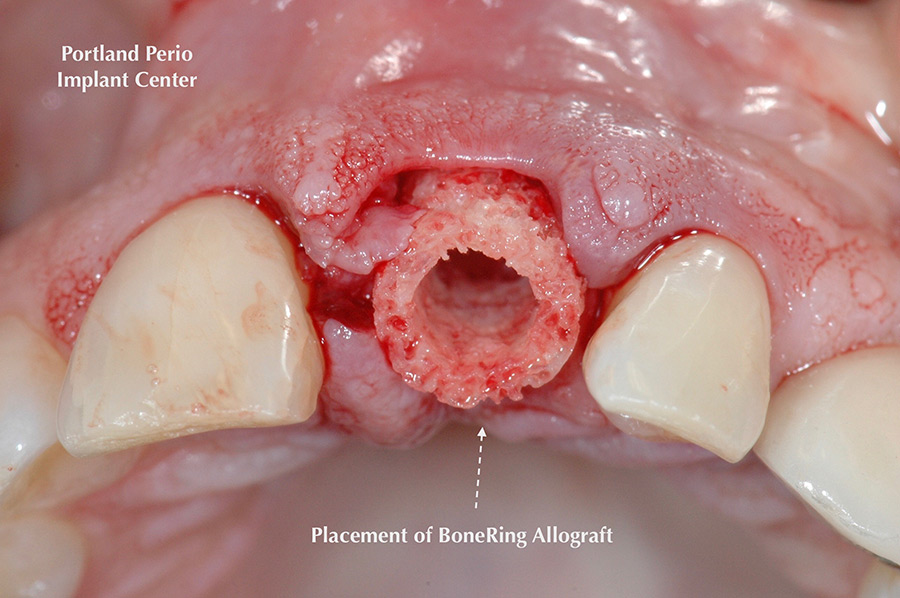
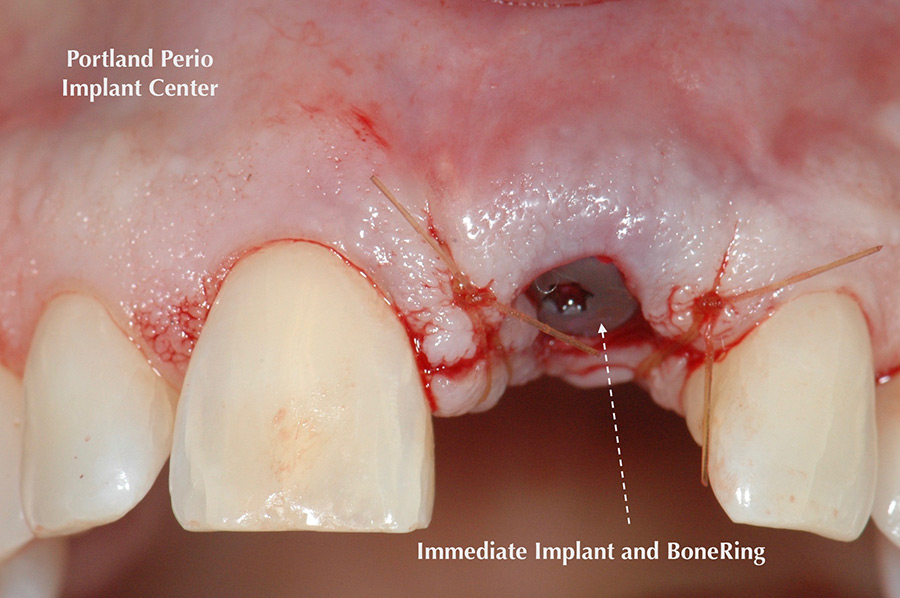
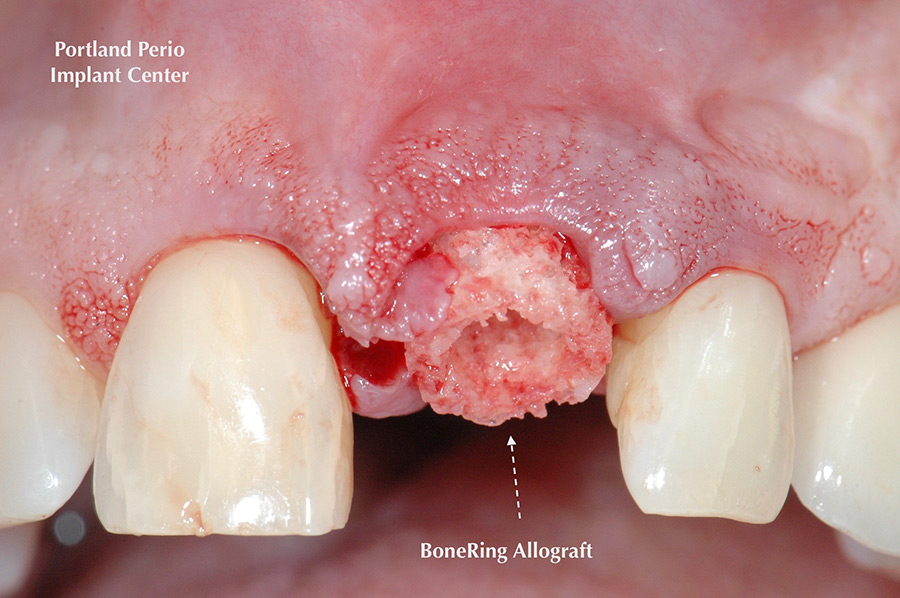
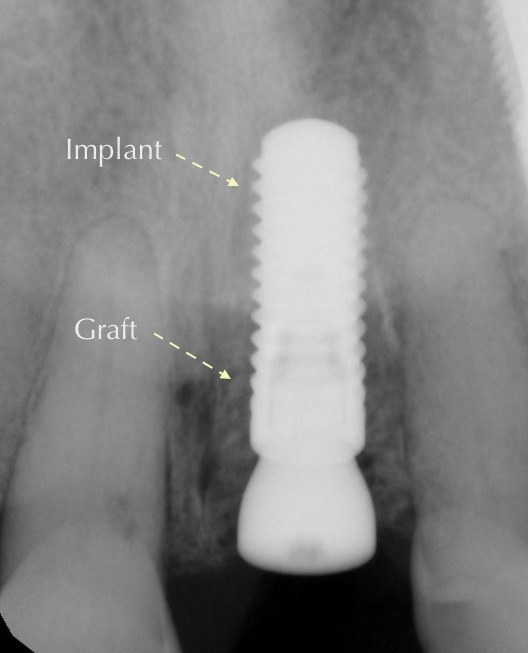
Following a 4 month healing period, before the definitive restoration was made, a temporary implant crown was fabricated to condition the soft tissues and begin the process of creating an esthetically pleasing soft tissue profile. This step in the treatment sequence is critical for establishing an optimal esthetic outcome. The custom final implant crown was fabricated to the patient’s desires that closely resembled the pre-operative appearance by maintaining a central diastema. CT scan assessment of the allograft Bone Ring at 11 months post-operatively revealed excellent stability and quantity of bone around the implant.
An excellent esthetic outcome in an otherwise technically demanding case means an increase in personal confidence and quality of life. Janis, we hope that you will enjoy your smile for a long time to come.
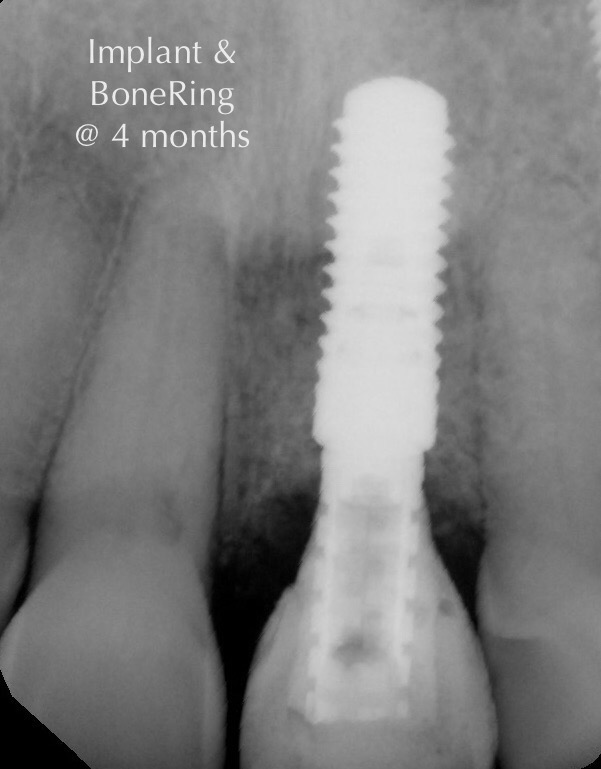

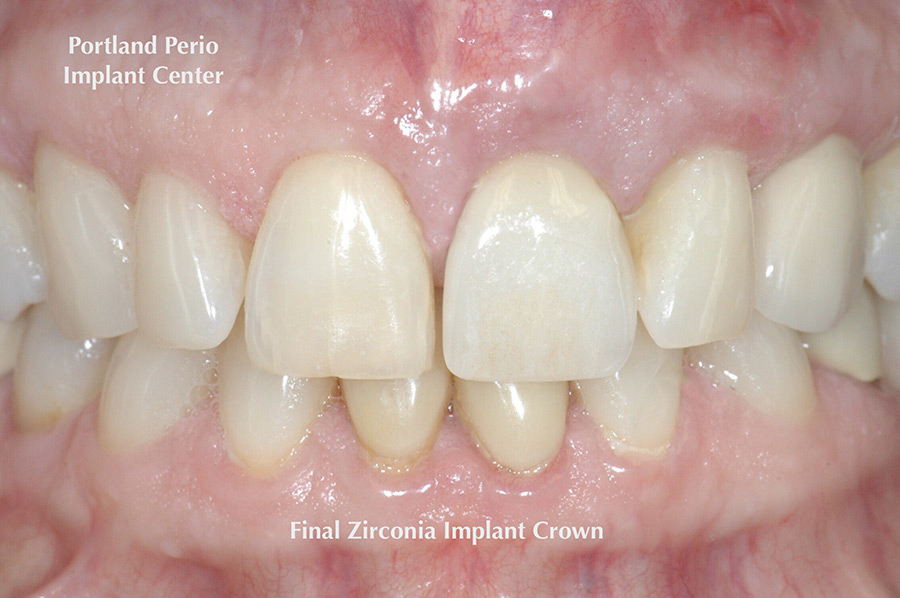
In the patient's own words:
“It is my pleasure to highly recommend Dr. Haghighat. I am not a fan of writing reviews, but in this situation I am motivated. I had a front tooth that had to be pulled, because of a previous trauma to the tooth. Needless to say, it was upsetting. In addition, I was told that I did not have enough bone in the area in which to anchor the implant. A CT scan was taken right in the office, after which Dr. Haghighat assured me that after a bone graft, an implant placement would work. In addition to a successful implant being put in, Dr. Haghighat was meticulous about the appearance and the health of the gum. The doctor was easy to relate to, and to trust. He answered all my questions in a calm and confident way. He explained everything. His dental assistant, Melissa and office manager Dani are awesome, competent and friendly. I am so relieved to have been taken care of by such good people.”
